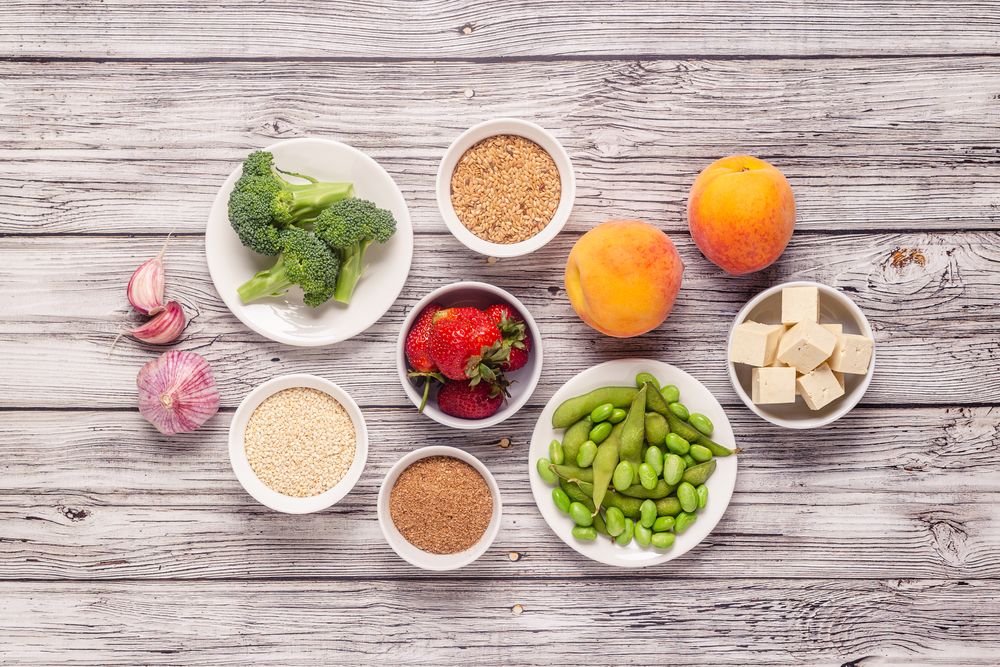Perimenopause is a transitional phase before menopause that can bring about a variety of physical and emotional changes in a woman's life. Hormonal shifts such as the decline in estrogen levels often lead to symptoms like hot flashes mood swings weight gain and fatigue. While this stage is a natural part of aging many women wonder how they can better manage their symptoms. Nutrition plays a crucial role in this offering a way to alleviate discomfort and support overall health.
The Role of Nutrition in Managing Perimenopause Symptoms
The hormonal changes experienced during perimenopause significantly impact the body influencing metabolism bone density and even mental health. By choosing nutrient-rich foods and avoiding certain dietary pitfalls women can manage symptoms more effectively.
For instance calcium and vitamin D are essential for maintaining bone health during perimenopause. A lack of estrogen increases the risk of osteoporosis and ensuring adequate intake of these nutrients can reduce this risk. Additionally a balanced diet rich in healthy fats fiber and protein can stabilize energy levels improve mood and combat the metabolic slowdown that often accompanies perimenopause.
Foods to Include in a Perimenopause Diet
The right foods can have a dramatic impact on alleviating the discomforts of perimenopause. Here are some must-have foods for a perimenopausal diet:
Leafy Greens: Spinach kale and other greens are packed with calcium magnesium and antioxidants which support bone health and help reduce inflammation.
Fatty Fish: Salmon mackerel and sardines are rich in omega-3 fatty acids which can ease mood swings reduce inflammation and support heart health. Omega-3s have also been linked to a reduction in hot flashes.
Whole Grains: Brown rice quinoa and oats provide fiber which supports digestive health and helps regulate blood sugar levels. Stable blood sugar is key to avoiding energy crashes and irritability.
Berries: These antioxidant-rich fruits are excellent for brain health which may help alleviate brain fog and memory issues that are common during perimenopause.
Nuts and Seeds: Almonds walnuts chia seeds and flaxseeds provide healthy fats and protein which are essential for maintaining muscle mass and overall energy. Flaxseeds in particular are rich in lignans which may have estrogen-like effects that help balance hormones.
Soy Products: Tofu tempeh and edamame contain phytoestrogens plant-based compounds that mimic estrogen in the body. Some studies suggest that these foods may help reduce hot flashes and other symptoms related to low estrogen levels.
Foods to Avoid During Perimenopause
While certain foods can alleviate perimenopause symptoms others may exacerbate them. Here’s a list of foods to avoid:
Processed Sugars: High sugar intake can lead to weight gain increase the risk of type 2 diabetes and contribute to mood swings. It also spikes blood sugar which can cause energy crashes and irritability.
Refined Carbohydrates: White bread pastries and other refined carbs can contribute to insulin resistance leading to weight gain especially around the abdomen. These foods also tend to be low in fiber worsening digestive issues like bloating and constipation.
Caffeine: While coffee may feel like an energy boost too much caffeine can worsen anxiety disrupt sleep and trigger hot flashes. Reducing caffeine intake may help women feel more relaxed and rested.
Alcohol: Alcohol can interfere with sleep quality worsen mood swings and may increase the frequency and intensity of hot flashes. Moderating or avoiding alcohol can contribute to a smoother perimenopause experience.
High-Sodium Foods: Excess salt can lead to bloating and water retention. It can also contribute to high blood pressure which is a concern as cardiovascular health becomes more vulnerable during perimenopause.
Supplements for Perimenopause
In addition to a balanced diet supplements can be useful for addressing specific nutritional gaps during perimenopause. Here are some recommended options:
Calcium and Vitamin D: To support bone health women should ensure adequate intake of these nutrients. Many women may benefit from supplements especially if they do not consume enough calcium-rich foods or have limited sun exposure for natural vitamin D synthesis.
Magnesium: Magnesium plays a key role in reducing stress promoting relaxation and improving sleep quality. It also supports muscle and nerve function helping with cramps and aches that may occur during perimenopause.
B Vitamins: The B-complex vitamins particularly B6 and B12 are vital for energy production and mental health. They help combat fatigue and improve mood which is essential during the emotional rollercoaster of perimenopause.
Omega-3 Fatty Acids: Fish oil or algae-based omega-3 supplements can reduce inflammation and support heart health. They may also help manage mood swings and improve cognitive function.
Black Cohosh: This herbal supplement is commonly used to manage hot flashes and night sweats. While more research is needed some women find it helpful for reducing the intensity of these symptoms.
Meal Planning for Perimenopause
Meal planning can be a powerful tool for managing perimenopause symptoms. A well-balanced meal plan can help women avoid foods that trigger symptoms and ensure they get all the nutrients needed to support their changing bodies.
Breakfast: Start the day with a nutrient-packed smoothie made with leafy greens berries and flaxseeds. Add a scoop of protein powder or Greek yogurt for a protein boost which will keep you full and energized throughout the morning.
Lunch: Focus on a colorful salad filled with fiber-rich vegetables lean protein (such as grilled chicken or tofu) and a sprinkle of nuts or seeds. Add a drizzle of olive oil and lemon for a dose of healthy fats.
Snack: Keep snacks simple and healthy like a handful of almonds or an apple with peanut butter. These snacks offer protein and fiber which help stabilize blood sugar and prevent mid-afternoon energy slumps.
Dinner: Opt for a balanced plate with whole grains (like quinoa or brown rice) lean protein (such as salmon or turkey) and roasted vegetables. Incorporating foods like sweet potatoes or leafy greens ensures you're getting plenty of vitamins and minerals.
Mother Cuppa Tea: Throughout the day consider sipping on a calming herbal tea like Mother Cuppa Tea which is specifically designed to support women during perimenopause. It’s packed with herbs that help balance hormones reduce stress and promote relaxation.
Good Bad Foods for Perimenopause
Navigating perimenopause can feel challenging, but making mindful food choices can help manage symptoms and improve overall well-being. When planning meals, it's essential to focus on "good" foods that support hormone balance and overall health while limiting "bad" foods that might trigger discomfort. Below, we’ll explore the good and bad foods for perimenopause to help women feel more in control during this transition.
Good Foods for Perimenopause include:
- Whole grains
- Leafy greens
- Fatty fish
- Nuts and seeds
- Berries
Bad Foods for Perimenopause to limit or avoid:
- Processed sugars
- Refined carbs
- Caffeine
- Alcohol
- High-sodium foods
By focusing on good foods and limiting the bad ones women can feel more in control of their health and symptoms during perimenopause.
Conclusion
Perimenopause is a challenging time for many women but the right nutrition can help alleviate symptoms and promote overall well-being. By focusing on nutrient-dense foods avoiding common dietary pitfalls incorporating helpful supplements and planning meals with care women can navigate perimenopause with greater ease. Adding herbal teas like Mother Cuppa Tea to daily routines can offer additional support promoting calm and balance during this transitional phase.









